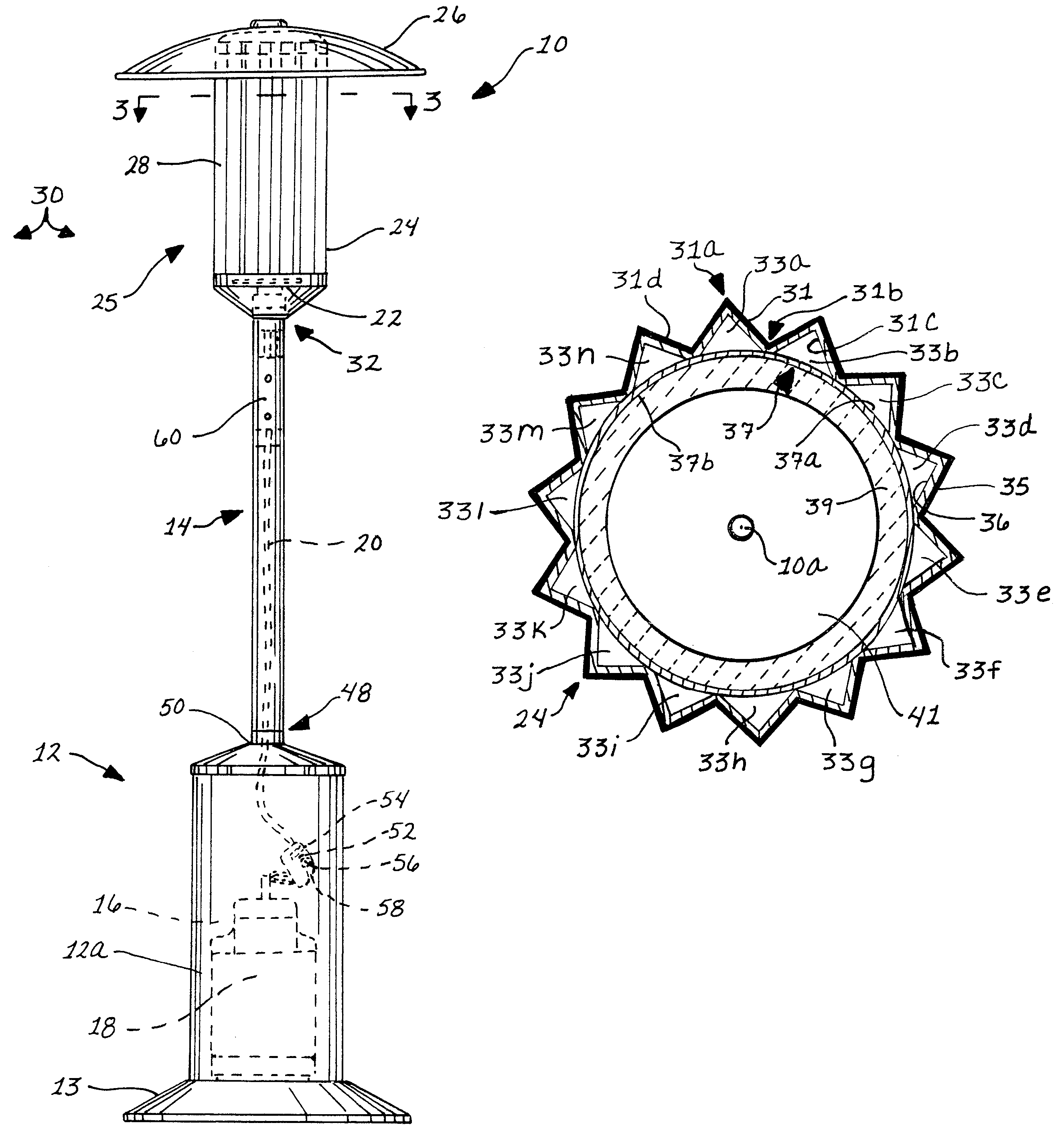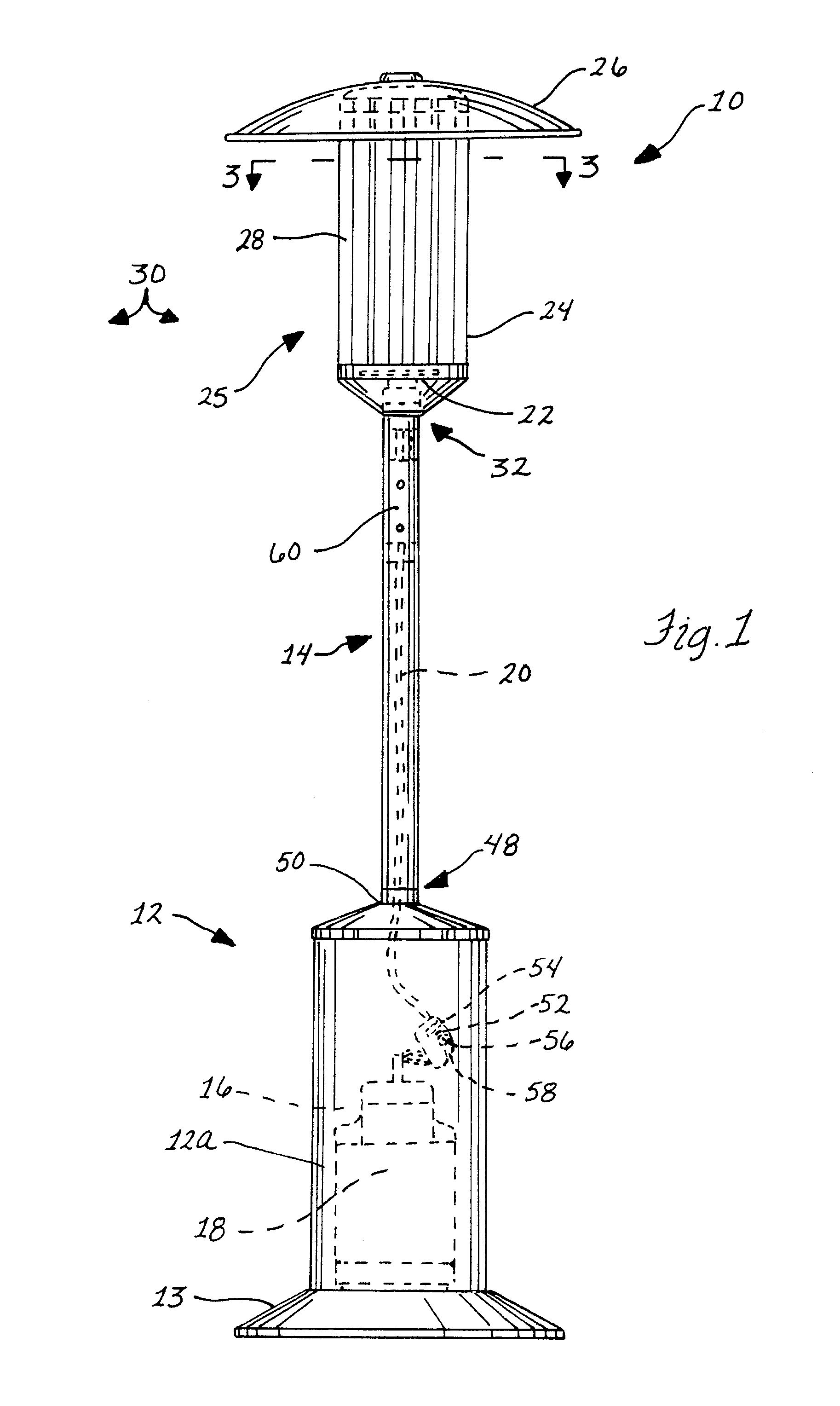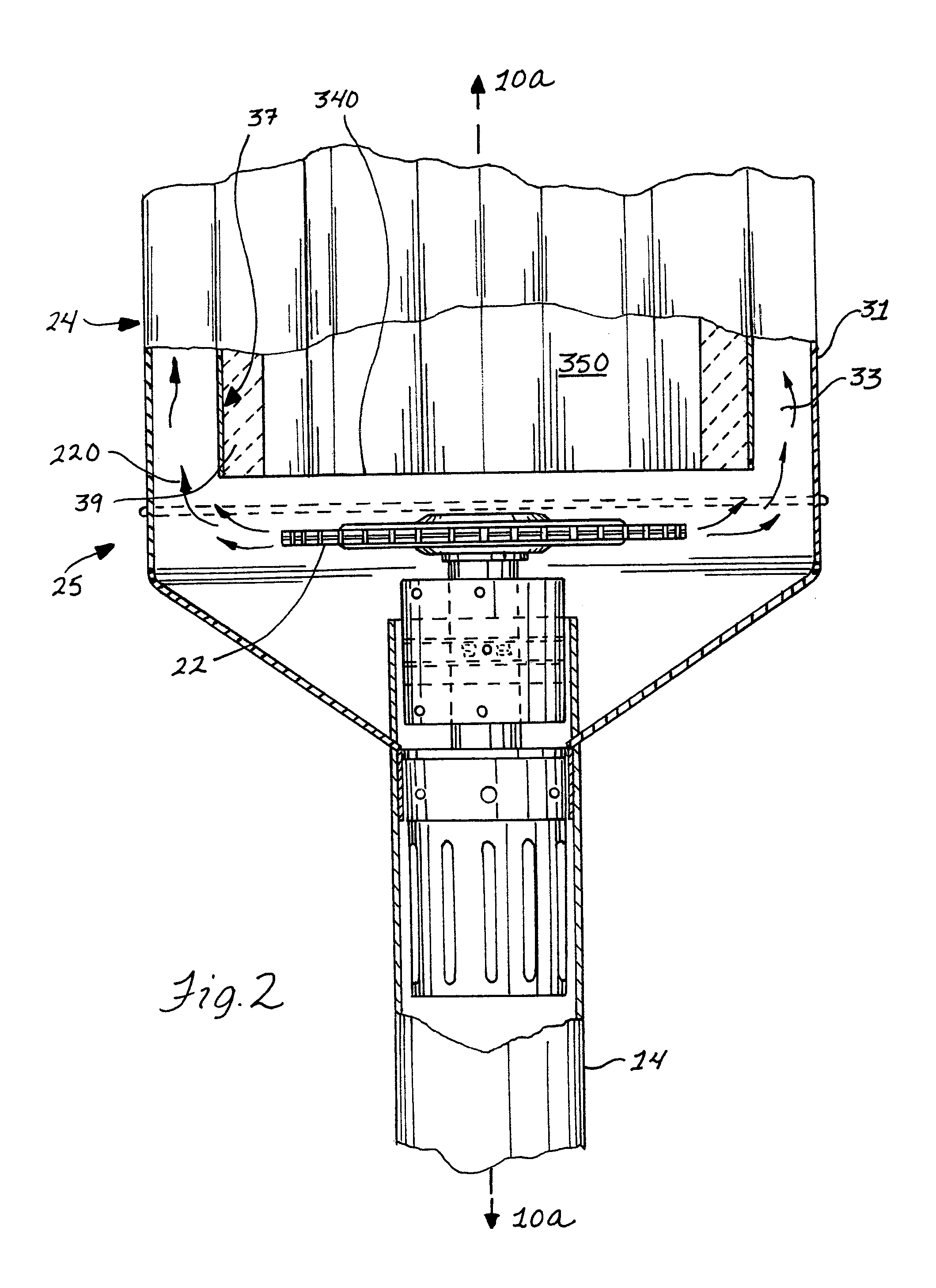Heating apparatus
a technology of heating apparatus and apertured emitter, which is applied in the direction of muffle furnaces, domestic stoves or ranges, furnaces, etc., can solve the problems of poor heating efficiency of apertured emitters, insufficient surface area of optimized heat, and insufficient heat transfer efficiency of apertured walls, so as to maximize heat transfer and maximize heat transfer. the effect of heat transfer from the hot combustion gas to the external wall portions
- Summary
- Abstract
- Description
- Claims
- Application Information
AI Technical Summary
Benefits of technology
Problems solved by technology
Method used
Image
Examples
Embodiment Construction
[0024]In FIGS. 1–4, a high-efficiency heating apparatus in accordance with the present invention is illustrated. The heating apparatus 10 is adapted to utilize natural or LP gas as fuel to generate heated air by the hot gases of combustion and radiant infrared heat for keeping an area about the apparatus 10 heated. The apparatus 10 is often termed a “patio heater” as it is designed primarily for outdoor use such as during nighttime in patio areas outside of taverns and bars so that patron can spend time outdoors in a comfortable preselected area which is warmer than the colder outdoor temperature. As shown, the patio heater 10 has a base 12 at the bottom of elongate support member, post or standard 14. The base 12 has an interior space 16 for containing L.P. tank 18 therein. Alternatively, the heating apparatus 10 need not be in the form of a patio heater including the base 12 and standard 14 described above, and instead can be more simply a free standing heating unit such as a spac...
PUM
 Login to View More
Login to View More Abstract
Description
Claims
Application Information
 Login to View More
Login to View More - R&D
- Intellectual Property
- Life Sciences
- Materials
- Tech Scout
- Unparalleled Data Quality
- Higher Quality Content
- 60% Fewer Hallucinations
Browse by: Latest US Patents, China's latest patents, Technical Efficacy Thesaurus, Application Domain, Technology Topic, Popular Technical Reports.
© 2025 PatSnap. All rights reserved.Legal|Privacy policy|Modern Slavery Act Transparency Statement|Sitemap|About US| Contact US: help@patsnap.com



